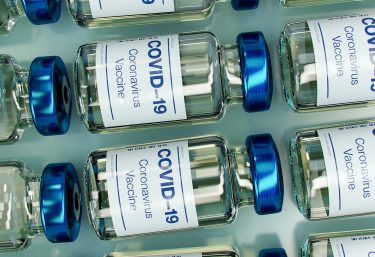May 13, 2021
Collaborating to Increase King County Vaccination Rates
The University of Washington Health Promotion Research Center (UW HPRC) is working to increase vaccination rates for underserved communities within King County, Washington. This project will specifically include Latino, Black, and immigrant multigenerational households with elders and adults working in essential industries.

This project is part of a national effort with U.S. Centers for Disease Control and Prevention (CDC) known as the Connecting Behavioral Science to COVID-19 Vaccine Demand (CBS-CVD) Network. Thanks to $500,000 in funding from the CDC over the next year, the UW Health Promotion Research Center will contribute to the national vaccination effort through local partnerships. The center is one of 26 member centers in the network, which are also part of the CDC’s Prevention Research Center (PRC) network.
Barbara Baquero, UW Health Promotion Research Center investigator, will lead this project at UW and its engagement efforts within King County. Baquero is also an associate professor in the UW Department of Health Services* within the School of Public Health.
Study Partners & Communities
The UW Health Promotion Research Center will collaborate with its Community Advisory Board and partners such as Public Health – Seattle & King County. The research team and its partners chose to focus on communities showing lower vaccination rates, as well as higher infection and death rates, based on King County data.
Our Plan & Collaborative Actions
Partnering With Communities
Our project team will interview and hold focus groups with community members to identify social and behavioral drivers of vaccine confidence, as well as opportunities to increase access to health services or other venues where people can receive the COVID-19 vaccine. Through the interviews and focus groups we want to better understand:
- Social and physical barriers to accessing COVID-19 vaccination sites
- Preferred vaccination sites based on community group
- Preferred communication channels
- Messaging effects on vaccinations
Training Navigators Within Communities
Using information from the interviews and focus groups, we will train COVID-19 Information Navigators to share information and provide support and education to their community members around vaccination. These navigators will be volunteers, including bilingual people, in the communities we are aiming to reach.
We will evaluate the reach of our navigator program by the number of volunteers who complete training, the number of trainees who sign-up for the King County COVID-19 alert system, and the number of community members trainees share information with, as well as what channel of communication they used.
Bringing Vaccines to People
We know that physical access to vaccines plays a huge role in vaccination rates based on recommendations from The Guide to Community Preventive Services (a national public health resource supported by the CDC) and our own efforts in supporting flu vaccinations for restaurant workers in King County. In focus groups and surveys about flu shots, we learned workers would not likely be willing to travel even a few blocks for free vaccinations. When vaccines were offered directly at restaurants, it nearly doubled vaccination rates while also reducing pre-existing racial and ethnic disparities.
We will work with our partners and their community members to better understand where COVID-19 vaccination sites need to be. These will likely be places where community members are already living, working, and visiting, including community hubs and religious centers.
Providing Clear Messages
We will test COVID-19 vaccination messages with our community partners to help ensure they are informative as well as concise and easy to understand. We will also look at the number of messages selected, the number of collaborative COVID-19 vaccination events, and information from people at COVID-19 vaccination sites to better understand the awareness of and attitudes toward our messages about the vaccine, as well as willingness to get the vaccine.
When possible, we will do brief surveys with people connected to the organizations where the vaccination site is (such as all employees at a company or members of a faith community) to understand remaining barriers to vaccination among people who do not get vaccinated.
Modeling Equitable Access & Saving Lives
Through our collaborative efforts and our findings, we hope to provide a better understanding of how other communities across the U.S. can increase vaccination rates for people who are experiencing significant health disparities related to vaccinations. Ultimately, this will help save lives and improve the health and well-being of community members who can benefit most.
This project is titled Partnership for Vaccine Confidence (PaVC).
* The Department of Health Services is now the Department of Health Systems and Population Health. This name change took place July 1, 2021.